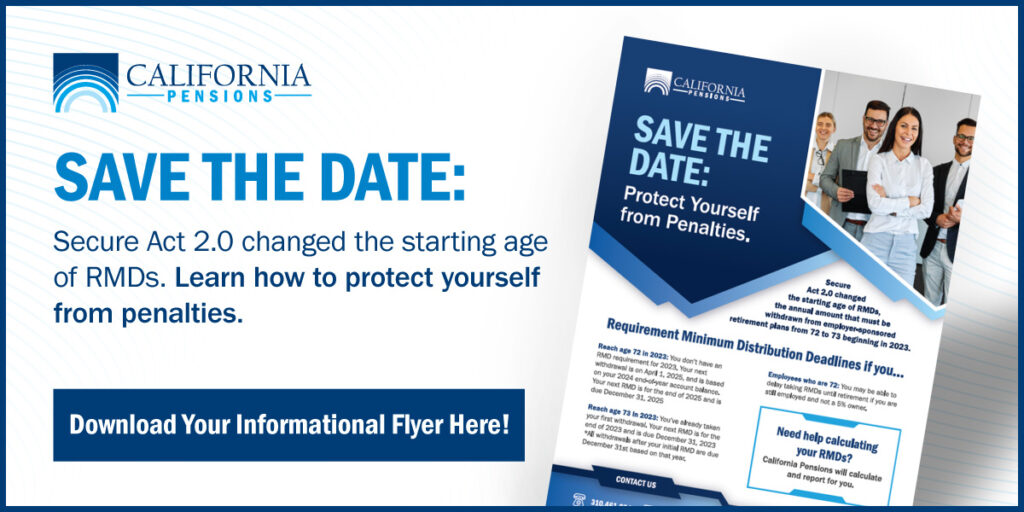Whether you’re a plan sponsor, business owner, CFO, or just an interested party, it can be challenging to stay up to date with retirement plan regulations. Therefore, you may not be aware that the IRS recently provided guidance on self-correction of eligible inadvertent failures under Section 305 of the SECURE 2.0 Act. To bring you up to speed, we’ll explain the new IRS guidelines in a way that is easy to understand.
Supercharge Your Employer-Sponsored Plan – Download Our Helpful Infographic!
What is an Eligible Inadvertent Failure?
An eligible inadvertent failure refers to a mistake made by plan sponsors or administrators when administering a retirement plan that violates the qualification requirements set forth by the IRS. For an inadvertent failure to be eligible for self-correction, the following must apply:
- Self-correction is completed within a reasonable period after identifying the failure.
- The plan sponsor has pre-established practices and procedures reasonably designed to promote and facilitate plan compliance.
- The failure is identified by the IRS prior to “any actions demonstrating a specific commitment to implement a self-correction with respect to the failure.”
- The failure must not be egregious.
- The misuse or diversion of plan assets is not involved in the failure.
- Connection to an abusive tax avoidance transaction is not related to the failure.
Overview of the New IRS Guidelines
The new IRS guidelines under the SECURE 2.0 Act of 2022 introduced changes to the Employee Plans Compliance Resolution System (EPCRS) to assist plan sponsors in correcting eligible inadvertent failures. Here’s a summary of these guidelines as they apply to 401(k) and 403(b) plan administration:
- Plan administrators can correct unintentional errors by interpreting Section 305 of SECURE 2.0 and the Notice in good faith.
- Eligible errors that occurred before December 29, 2022, can be self-corrected under these rules.
- Plan administrators have a duty to establish practices and procedures to promote compliance with the Code, regulations, and plan rules.
- Correction methods should comply with EPCRS rules and the IRS-approved methods.
- Record-keeping requirements remain unchanged, including documenting practices, identifying errors and affected participants, describing the period of failure, correction methods, and completion date.
- Inadvertent loan failures, including most non-compliance with Section 72(p) participant loan requirements, can be self-corrected.
- Insignificant failures can be self-corrected even during an IRS examination or audit.
- The plan administrator must actively pursue specific corrections, not just general statements or audits.
- A reasonable time for correction is determined based on the circumstances, with 18 months from the time the failure is identified being considered reasonable.
- Certain failures cannot be self-corrected, such as failure to adopt a written plan document initially, significant failures in a terminating plan, or retroactive amendments less favorable to participants.
- Self-correcting an eligible inadvertent failure does not waive any applicable excise or additional taxes, which can be requested through a VCP submission.
Benefits of Self-Correction and Complying with IRS Guidelines
Understanding and complying with the IRS guidelines for eligible inadvertent failure benefits your business in multiple ways. Proactively identifying and correcting eligible inadvertent failures can help businesses avoid substantial penalties imposed by the IRS and maintain qualification status. Not only is this vital for receiving necessary tax benefits, but it also demonstrates a commitment to addressing non-compliance issues, promoting transparency and trust among plan participants. Additionally, addressing eligible inadvertent failures helps plan sponsors identify potential weaknesses in plan administration. This allows them to improve internal processes to prevent future compliance issues.
Stay Compliant with California Pensions
Understanding and adhering to the new guidelines for eligible inadvertent failure is crucial. At California Pensions, our goal is to provide expert guidance and compliance solutions to ensure that your retirement plan fully meets the standards of the IRS, allowing you to focus on what matters the most – the growth and success of your business.


